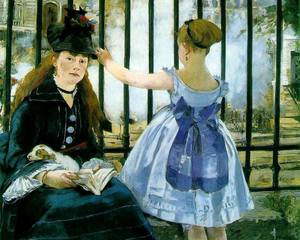Mary Shelley’s Frankenstein elucidates several intriguing concepts about humanistic culture. The narrator (for the majority of the novel) and protagonist, Victor Frankenstein, successfully incarnates inanimate limbs and organs to create a living organism. This “creature” is neglectfully inserted into a dispassionate society, causing the principal conflicts within the novel. His appearance, so abhorred and repulsive, provokes his aberration and ostracism, which soon precipitate his violent reactions. Interestingly enough, the monster possesses superior intellect and lucid emotion, but his consistent human rejection almost defaces his flamboyant qualities. Frankenstein meticulously depicts society’s ethics, actions, and standards through the alienation of Victor’s creation.
Upon several instances of human contact, the monster is uncivilly rejected (physically). For example, quick after his birth, the creature encounters a village in hopes of nourishment and comfort. Their reaction was quite the opposition. The monster explains the nature of the villagers’ unwelcoming revulsion and explicates their use of “stones and many other kinds of missile weapons” (91). Their immediate malevolence for the monster represents a frequent (unaddressed) ideology, the intolerance of flawed appearance. If the monster had bountifully arrived near the village with pleasing and attractive features, his admittance would have been amiable and hospitable. Of course, the villagers’ disposition was partially provoked by terror, but their immediate opposition of the being’s affections (which were perceptible) must have been merely out of aversion.
Mary Shelley develops the monster’s character to be innocent and virtuous through instinctive motives. His gradual story parallels adolescence and represents her ideologies on Rousseau’s concept of the “Noble Savage”, which heavily influenced portions of the French Revolution (during Mary Shelley’s life). His disastrous encounters with an intolerant society stimulate feelings of vindictiveness, causing him to violently assault and murder the friends and family of his father, Victor Frankenstein. His malpractices induce further alienation without the possibility of absolution. This social response assists a communal belief against redemption. Often, society (with impregnable minds) distrusts those who have publically atoned; undoubtedly, the creature is no exception.
Frankenstein plays with society’s perception of abominations and fears. Shelley construes how horror dominates the human conscience (especially in today’s conservative culture) through aspects of the monster’s exclusion and rejection. For instance, when the creature confronts the De Lacey family, whom he had admired for months before, he is brutally rejected by Felix because of dismay. Noticeably, De Lacey, the blind father without any apprehension of the monster’s repugnant appearance, conducts a conventional conversation solely based on his complacency with the monster’s temperament. Surely, upon Felix’s instantaneous view of the fiend, he “strikes the creature violently with a stick” (117). Perhaps De Lacey, through immense persuasion, could have sparked Felix to accept the monster, but their trepidations motivated a prompt departure from the cabin.
Mary Shelley cleverly relates humanistic lifestyle to the pariah of the novel. The creature’s alienation is thoroughly depicted by characters of minimal significance in society (excluding Victor Frankenstein), thus amplifying the degree of his suffrage and ostracism. The monster’s melancholic tale of exile is representative of the humanistic standards for appearance and fear. Mary Shelley’s Frankenstein excellently evaluates society’s orthodox motivations using Victor’s creation.




